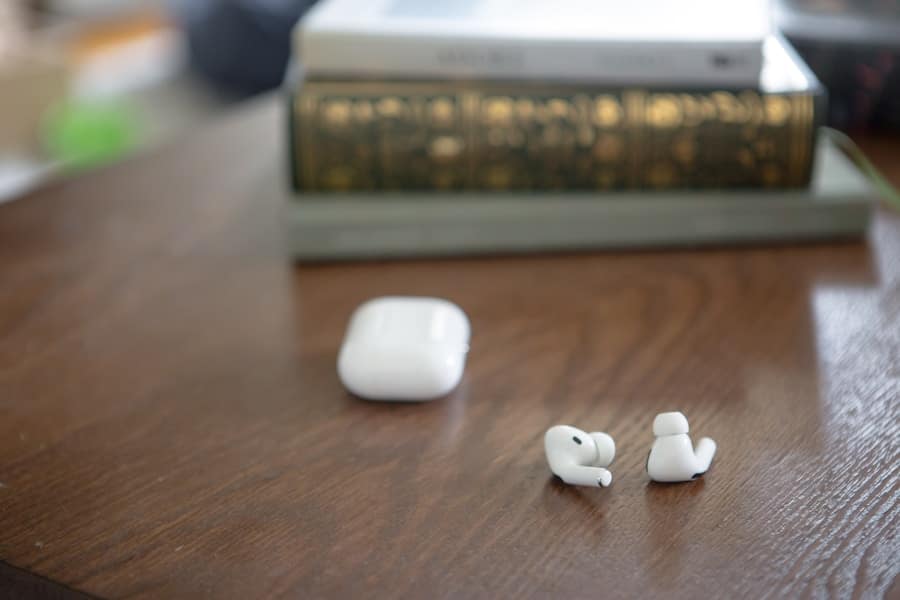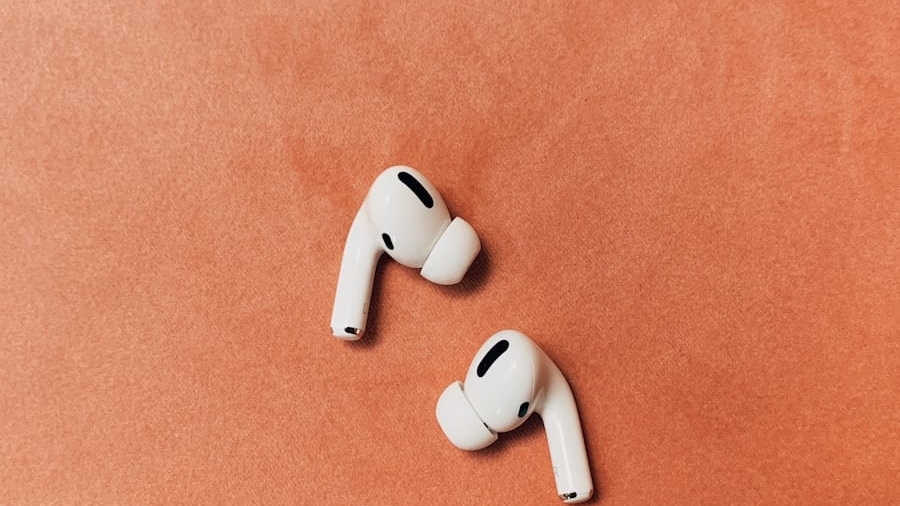The journey of hearing aids has been a remarkable one, marked by significant technological advancements and a deepening understanding of auditory health. The earliest hearing aids, dating back to the 17th century, were rudimentary devices made from materials like wood, metal, or even animal horns. These early forms, known as ear trumpets, were designed to amplify sound but lacked the sophistication and effectiveness of modern devices.
As the 20th century approached, the introduction of electrical components revolutionized hearing aids. The first electronic hearing aid was developed in the 1920s, utilizing vacuum tubes to amplify sound. This marked a pivotal moment in audiology, as it allowed for greater sound amplification and clarity.
The latter half of the 20th century saw further innovations with the advent of transistors in the 1950s, which made hearing aids smaller, more efficient, and more accessible. The miniaturization of technology continued into the 1980s and 1990s with the introduction of digital signal processing (DSP). This technology enabled hearing aids to not only amplify sound but also to filter out background noise and enhance speech recognition.
The transition from analog to digital technology was a game-changer, allowing for customizable settings tailored to individual hearing loss profiles. Today’s hearing aids are equipped with advanced features such as directional microphones, feedback cancellation, and noise reduction algorithms, showcasing a remarkable evolution from their primitive predecessors.
Key Takeaways
- Hearing aids have evolved from simple amplifiers to sophisticated devices with connectivity and artificial intelligence.
- Connectivity allows hearing aids to connect to smartphones, TVs, and other devices, providing a seamless listening experience.
- Smart hearing aids use advanced technology to automatically adjust settings based on the user’s environment and preferences.
- Artificial intelligence plays a crucial role in enhancing the performance and capabilities of smart hearing aids.
- Connectivity and remote monitoring enable users and healthcare professionals to adjust settings and monitor the performance of hearing aids from a distance, improving convenience and care.
The Benefits of Connectivity
Streamlined Communication
This connectivity allows users to stream phone calls, music, and other audio directly into their hearing aids, providing a more immersive listening experience. For individuals with hearing loss, this feature can be transformative, as it eliminates the need for additional accessories or devices to facilitate communication.
Personalized Control
Moreover, connectivity enhances the functionality of hearing aids through companion apps that allow users to control settings directly from their smartphones. These apps often provide features such as volume control, program adjustments for different environments, and even remote troubleshooting assistance from audiologists. This level of control empowers users to tailor their hearing experience according to their preferences and surroundings.
Smart Home Integration
Additionally, many smart hearing aids can connect to smart home devices, enabling users to adjust their environment with ease. For instance, users can link their hearing aids to smart TVs or home assistants, allowing for a more integrated and enjoyable auditory experience.
How Smart Hearing Aids Work

Smart hearing aids operate on sophisticated technology that goes beyond mere amplification. At their core, these devices utilize advanced digital signal processing (DSP) to analyze sound in real-time. When sound waves enter the microphone of a smart hearing aid, they are converted into digital signals that can be manipulated by complex algorithms.
These algorithms assess various sound characteristics—such as frequency, intensity, and duration—to determine how best to enhance the audio for the user. For instance, speech recognition algorithms can prioritize speech sounds over background noise, making conversations clearer even in noisy environments. Furthermore, many smart hearing aids are equipped with multiple microphones that work together to create a directional listening experience.
This feature is particularly beneficial in social settings or crowded places where distinguishing speech from background chatter can be challenging. Additionally, some models incorporate machine learning capabilities that allow them to adapt over time based on user preferences and listening habits.
By learning which environments users frequent and how they prefer sounds to be adjusted, these devices can provide a personalized auditory experience that evolves with the user’s needs.
The Role of Artificial Intelligence
Artificial intelligence (AI) is playing an increasingly pivotal role in the development and functionality of smart hearing aids. By leveraging machine learning algorithms, these devices can analyze vast amounts of auditory data to improve their performance continuously. AI enables hearing aids to recognize different sound environments—such as quiet rooms, busy streets, or restaurants—and automatically adjust settings accordingly.
This level of adaptability ensures that users receive optimal sound quality without needing to manually change settings frequently. Moreover, AI can enhance speech recognition capabilities by distinguishing between various speakers and filtering out background noise more effectively than traditional methods. For example, some advanced models can identify when a user is in a conversation and prioritize that sound while suppressing irrelevant noises.
This is particularly useful in social situations where multiple conversations may be occurring simultaneously. Additionally, AI-driven features can include real-time translation services for multilingual environments or even voice-to-text capabilities for those who may struggle with auditory processing. As AI technology continues to evolve, its integration into hearing aids promises even greater advancements in user experience and accessibility.
Connectivity and Remote Monitoring
The integration of connectivity features in smart hearing aids has opened new avenues for remote monitoring and support. Audiologists can now access real-time data from patients’ devices, allowing for more proactive management of hearing health. Through secure cloud-based platforms, healthcare professionals can monitor usage patterns, identify potential issues, and make adjustments remotely without requiring patients to visit their offices physically.
This capability is particularly beneficial for individuals living in remote areas or those with mobility challenges who may find it difficult to attend regular appointments. Remote monitoring also empowers users by providing them with insights into their hearing habits and device performance. Many smart hearing aids come equipped with analytics that track usage time, battery life, and environmental settings.
Users can review this data through companion apps, gaining a better understanding of their auditory experiences and making informed decisions about their hearing health. Furthermore, some devices offer telehealth options where audiologists can conduct virtual consultations to address concerns or provide guidance on device usage. This shift towards remote care not only enhances convenience but also fosters a more collaborative relationship between patients and healthcare providers.
Improving Quality of Life

The impact of smart hearing aids on quality of life cannot be overstated. For individuals with hearing loss, these devices are not merely tools for amplification; they are gateways to improved communication and social interaction. Enhanced auditory experiences allow users to engage more fully in conversations with family and friends, reducing feelings of isolation that often accompany untreated hearing loss.
The ability to participate actively in social settings contributes significantly to emotional well-being and overall mental health. Moreover, smart hearing aids facilitate access to information and entertainment in ways that were previously challenging for those with hearing impairments. Streaming music or watching television becomes a more enjoyable experience when sound is tailored specifically for the user’s needs.
Additionally, features such as noise reduction and feedback cancellation help create a more comfortable listening environment, further enhancing daily activities like dining out or attending events. As users regain confidence in their ability to communicate effectively and enjoy various experiences without barriers, their overall quality of life improves dramatically.
Overcoming Challenges
Despite the numerous advantages offered by smart hearing aids, challenges remain in their widespread adoption and effective use. One significant barrier is the cost associated with these advanced devices. While prices have decreased over time due to technological advancements and increased competition in the market, many individuals still find high-quality hearing aids financially inaccessible without insurance coverage or assistance programs.
This economic hurdle can prevent those who need these devices most from benefiting from their capabilities. Another challenge lies in the complexity of technology itself. While many users appreciate the advanced features of smart hearing aids, some may struggle with understanding how to operate them effectively.
The learning curve associated with new technology can be daunting for older adults or those unfamiliar with digital devices. To address this issue, manufacturers and audiologists must prioritize user-friendly designs and provide comprehensive training resources that empower users to maximize their devices’ potential fully.
The Future of Smart Hearing Aids
Looking ahead, the future of smart hearing aids appears promising as technology continues to advance at an unprecedented pace. Innovations such as augmented reality (AR) integration could revolutionize how users interact with their environments by providing visual cues alongside auditory information. For instance, AR could enhance communication by displaying subtitles during conversations or providing visual alerts for important sounds like doorbells or alarms.
Additionally, ongoing research into brain-computer interfaces (BCIs) holds potential for even more profound changes in how we approach auditory health. BCIs could enable direct communication between the brain and hearing devices, allowing for seamless integration of sound processing without relying solely on traditional auditory pathways. As these technologies develop further, they may lead to entirely new paradigms in treating hearing loss.
Collaborative efforts between manufacturers, healthcare providers, and policymakers could pave the way for innovative solutions that ensure everyone has access to these life-changing devices regardless of socioeconomic status. In conclusion, the evolution of smart hearing aids reflects a broader trend towards personalization and connectivity in healthcare technology.
As we continue to explore new frontiers in auditory health through artificial intelligence and remote monitoring capabilities, it is clear that these devices will play an increasingly vital role in enhancing communication and improving quality of life for individuals with hearing loss.
Smart hearing aids are just one example of how technology is revolutionizing the healthcare industry. With the rise of connected health devices, patients are able to monitor their health in real-time and communicate with healthcare providers more effectively. This shift towards digital health solutions is also impacting project management in healthcare organizations. According to a recent article on best software for project management, healthcare professionals are turning to advanced tools to streamline operations and improve patient care. As technology continues to advance, the possibilities for improving healthcare outcomes are endless.
FAQs
What are smart hearing aids?
Smart hearing aids are advanced devices that not only amplify sound but also have additional features such as connectivity to smartphones, personalized settings, and the ability to adapt to different listening environments.
How are smart hearing aids becoming connected health devices?
Smart hearing aids are becoming connected health devices by integrating with smartphone apps and other health monitoring devices to provide users with real-time data on their hearing health. They can also be used to track and monitor other health metrics such as heart rate and physical activity.
What are the benefits of smart hearing aids as connected health devices?
The benefits of smart hearing aids as connected health devices include improved accessibility to personalized hearing care, the ability to monitor and track hearing health over time, and the potential for early detection of hearing-related issues. They also offer the convenience of remote adjustments and troubleshooting by healthcare professionals.
How do smart hearing aids connect to other devices?
Smart hearing aids can connect to other devices such as smartphones, tablets, and smartwatches using Bluetooth technology. This allows users to stream audio directly to their hearing aids, control settings through a mobile app, and integrate with other health monitoring devices.
Are there any privacy or security concerns with smart hearing aids as connected health devices?
As with any connected device, there are potential privacy and security concerns with smart hearing aids. Manufacturers are implementing measures to protect user data and ensure secure connections between the hearing aids and other devices. Users are encouraged to stay informed about privacy settings and security updates for their smart hearing aids.

